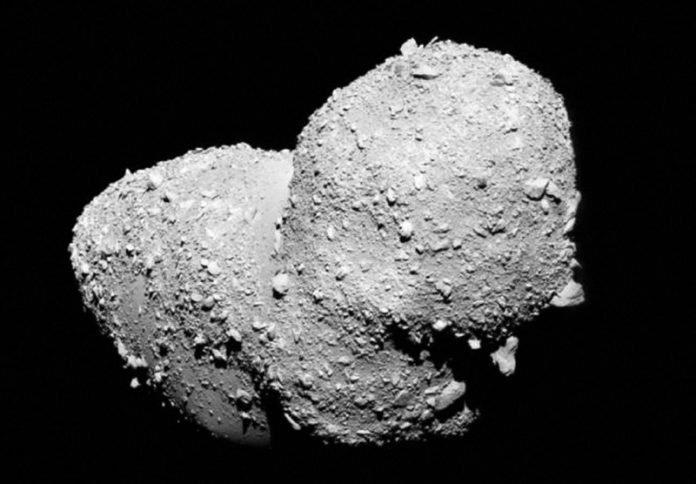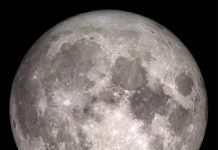
Scientists at the University of Arizona Lunar and Planetary Laboratory have made an exciting discovery that sheds light on how Earth may have acquired its water.
They found tiny salt crystals in a sample taken from an asteroid called Itokawa.
These crystals could only have formed in the presence of liquid water, which challenges previous beliefs about the dryness of certain types of asteroids.
The findings suggest that a large population of asteroids in our solar system may have played a crucial role in delivering water to our planet during its early stages.
The research team, led by Shaofan Che, a postdoctoral fellow at the Lunar and Planetary Laboratory, analyzed samples collected from asteroid Itokawa during the Japanese Hayabusa mission in 2005.
They confirmed that the salt crystals found on the asteroid originated from its parent body, ruling out the possibility of contamination after reaching Earth. These salt crystals closely resembled table salt and were a surprising discovery for the team.
Ordinary chondrites, a type of extraterrestrial rock from S-type asteroids like Itokawa, are believed to make up the majority of meteorites on Earth.
Until now, these meteorites were thought to contain little to no water-bearing minerals.
However, the presence of sodium chloride (salt) in the Itokawa samples suggests that this asteroid population may harbor more water than previously believed.
Scientists posit that Earth and other rocky planets formed in the inner region of the solar nebula, a cloud of gas and dust surrounding the young sun.
In this region, temperatures were too high for water vapor to condense.
Therefore, the water on Earth must have come from the outer reaches of the solar nebula, where it was colder and water could exist in the form of ice. Comets and C-type asteroids, which resided farther out, likely migrated inward and delivered water to Earth through impacts during its early stages.
The sample used in the study was a minuscule dust particle from Itokawa, only about twice the diameter of a human hair. The team carefully prepared a small section of the particle for analysis.
Using various techniques, they ruled out contamination sources such as human sweat, sample preparation, or laboratory moisture. Before and after photos showed that the distribution of salt grains inside the sample had not changed, further confirming the native presence of salt.
While tons of extraterrestrial matter enters Earth’s atmosphere daily, most of it burns up and never reaches the surface. To deliver water, a large enough asteroid must survive the journey through the atmosphere and make it to Earth’s surface.
In the 1990s, previous research proposed a mechanism in which water molecules in the early solar system could become trapped in asteroid minerals and survive impacts on Earth.
This mechanism could potentially deliver vast amounts of water to our planet. If common asteroids, like Itokawa, are indeed “wetter” than previously thought, it strengthens the hypothesis that asteroids played a significant role in bringing water to Earth.
The Itokawa puzzle
Itokawa, a peanut-shaped near-Earth asteroid, is approximately 2,000 feet long and 750 feet in diameter. Scientists believe it broke off from a much larger parent body.
Frozen water and frozen hydrogen chloride could have accumulated on Itokawa, and the heat from radioactive decay and meteorite impacts could have sustained hydrothermal processes involving liquid water.
Eventually, the parent body would have fragmented, giving rise to Itokawa and similar asteroids.
When ingredients necessary for liquid water come together on an asteroid, they can create cavities where water chemistry may occur.
The researchers found evidence of sodium-rich silicate minerals associated with sodium chloride in the Itokawa sample, indicating the presence of water during the formation of these minerals.
The discovery of salt crystals on asteroid Itokawa provides valuable clues about how Earth obtained its water.
This finding challenges previous assumptions about the dryness of certain asteroids and suggests that a significant population of asteroids may contain more water than previously believed.
The research supports the idea that asteroids played a crucial role in delivering water to Earth during its early stages.
By studying these extraterrestrial objects, scientists gain insights into the origins of water on our planet and unravel the mysteries of our solar system’s past.




